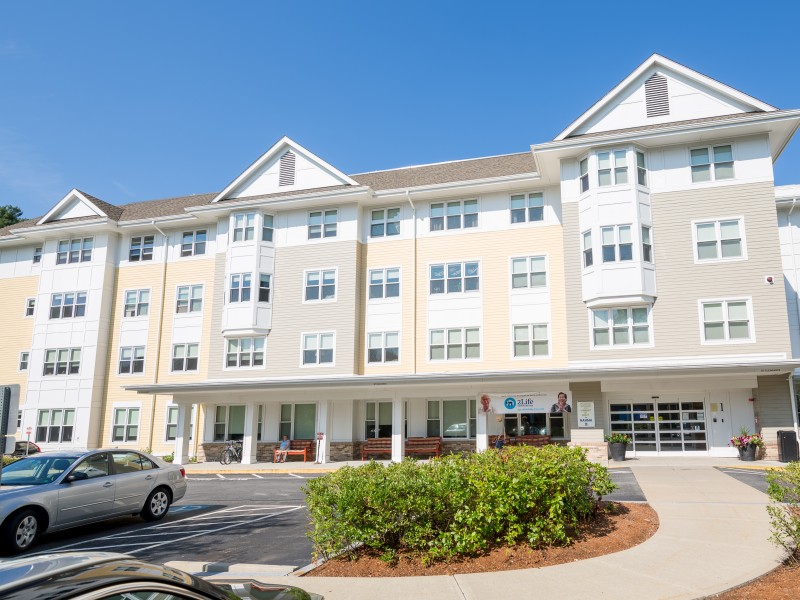Decoding affordable housing: What it means, who it serves, and why it matters

Housing is one of the most basic of human needs. Yet for millions of people, especially older adults living on fixed incomes, housing that is affordable is increasingly out of reach.
This first post in a series on decoding affordable housing breaks down some key terms and trends you should know to be part of the conversation on affordable housing. Understanding these distinctions is critical as we confront a deepening affordable housing crisis, particularly for the growing senior population.
Understanding key terms
Affordable housing is a general term reflecting the goal of spending no more than 30% of your gross household income on housing — leaving enough to cover other expenses.
Terms such as “public housing,” “subsidized housing,” and “supported housing” refer to housing options that are supported in some way by government funding, with the goal of keeping them affordable.
- Private subsidized housing is income restricted and owned and operated by for- and non-profit organizations. Government funds help reduce the rent residents must pay, typically through one-time capital funds that pay for a portion of construction costs and that in turn support lower rents. The majority of private subsidized housing is for households earning less than 60% AMI, although households earning as much as 110% AMI can sometimes qualify. Some apartments also receive ongoing operating subsidies (e.g., Section 8 and the Massachusetts Rental Voucher Program) for residents who earn less than 50% of AMI.
- Public housing is also income restricted but owned and operated by local housing authorities, public entities that cities and towns establish and govern. Federal and state governments provide ongoing capital and rent subsidies for all apartments. Households earning less than 80% AMI are eligible.
- Supported housing describes private subsidized housing that is also service enriched — in other words, programs and services are available either on site or through a coordinated referral to external service providers. Such housing (e.g., 2Life Communities) seeks to holistically address residents’ financial, social, health, and other needs. (For an example of what this can look like, see 2Life’s approach here.)
The important role of AMI
The U.S. Department of Housing and Urban Development (HUD) annually calculates AMI by household size and geographic location using U.S. Census data. The median household income in Massachusetts is $89,645, the third highest in the country (after only Maryland and the District of Columbia). (Source: World Population Review)
Generally, the lower your income, the more rent support programs you will qualify for.
- Low income refers to households with incomes between 50% and 80% AMI.
- Very low income refers to households with between 30% and 50% AMI.
- Extremely low income refers to households with incomes between 0% and 30% AMI.
You can look up the AMI for where you live or want to live here.
The pressing need for affordable housing
Housing is a fundamental human need and social determinant of health and economic well-being. But housing and related utilities also represent the bulk of a household’s budget.
If a household spends more than 30% of its budget on housing, it is considered “housing cost burdened,” while a household that spends 50% or more is considered "severely housing cost burdened.” Being cost burdened means the household may need to forgo healthcare, food, and other basic needs to pay for housing.
In addition, there are societal impacts to this budget imbalance, including reduced economic growth and tax revenue as well as strain on public services. Nearly half of all renter households in the U.S. are cost-burdened. (Source: U.S. Census Bureau)
Challenging trends
Not only is there a pressing need for more affordable housing, but that need is growing.
- The percentage of people who are considered housing cost-burdened continues to grow, with a record-high 8.5 million people considered severely housing cost burdened.
- The stock of low-rent units has declined in nearly all markets.
- Although we have a housing safety net, it has not kept pace with need. Rental subsidies assist 5.1 million very low-income households, but another 14.2 million are eligible and not supported.
- Not surprisingly, the number of people who are unhoused is also rising to record levels.
(Source: Joint Center for Housing Studies of Harvard University)
The impact of an aging population
Analysts expect the U.S. senior demographic (age 65 and older) to grow faster than all other age groups. By 2030, one in five Americans will be 65 or older. (Source: S&P Global)
This rapid growth will have a disproportionate impact on affordable housing demand, particularly as more than 40% of individuals between the ages of 55 and 64 have no retirement savings at all. (Source: Federal Reserve Board) In addition, the fixed nature of senior incomes means that more seniors will need affordable housing over time, as housing costs rise.
Coming up …
The vocabulary around affordable housing reflects more than just policy jargon — it shapes the lived experience of millions of people, especially older adults facing financial insecurity and rising housing costs. With demand outpacing supply and public support lagging behind, understanding the systems that support affordable housing is the first step toward advocacy, innovation, and change.
In the next post in this series, we’ll explore how housing needs shift as people age, and why service-enriched, supported housing is key to helping seniors thrive.


